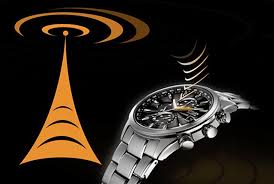THE EVOLUTION OF TIMEKEEPING AND THE ATOMIC APPROACH
There is a watch that is so accurate that it can redefine time itself: It’s called an atomic clock, and these are nothing to be played with.
Often, clocks are talked of in terms of accuracy, like 3 seconds off of a month, or one second off of a day. The most accurate wristwatch is the Citizen Chronomaster at a remarkable 5 seconds off a year.
But atomic timekeeping is a whole other demon. Bear in mind that atomic clocks are so precise that they supply time information to the GPS satellites, which use time data to triangulate your precise location. The time signals travel at the speed of light, so if you were to, say, make a slight error of 1 microsecond, that would translate to a little under 1,000 feet off your location.
So how accurate do atomic clocks need to be?
About 1 second off of the age of the entire universe. So roughly 1 second off of 14 billion years.

How, then, do these clocks work? Well, all clocks work by measuring oscillation, or repetitive motion. Old grandfather clocks measure a swinging pendulum: 1 second was one swing, give or take. But they suffered from one big problem: Changes in temperature or gravity would ruin their accuracy.
Skip forward a few hundred years, and in 1927 the first quartz clock was invented. Quartz has a unique property, that when you hit it with electricity it vibrates at a constant rate, making it shockingly accurate. Quartz clocks are in the same family as the Chronomaster wristwatch and are used by everyday tools such as phones, computers, and pacemakers. But with pressure and temperature changes, these quartz clocks can lose accuracy, very slightly, over time.
So, a whole new means of timekeeping was invented – enter atomic time. Physicists knew that atoms oscillate at constant and ridiculously accurate rates. And atoms of the same element oscillate at exactly the same rate. With that, in 1967, time was officially redefined: One second to this day is defined as 9,192,631,770 oscillations of a Cesium-133 atom. Clocks in this class of timekeeping work by measuring the Cesium -133 at a constant and serve as a means of checking all the other clocks around the world.
Millennia ago, humans first measured time by measuring the most constant thing we knew, the sun. For centuries, time was always defined by its rising and setting. But we outgrew the sun itself, and redefined time to fit the needs of our modern world.
Time has always been a human construct, but now it is something entirely our own. A construct made by us, and now defined by us.

Leave a comment